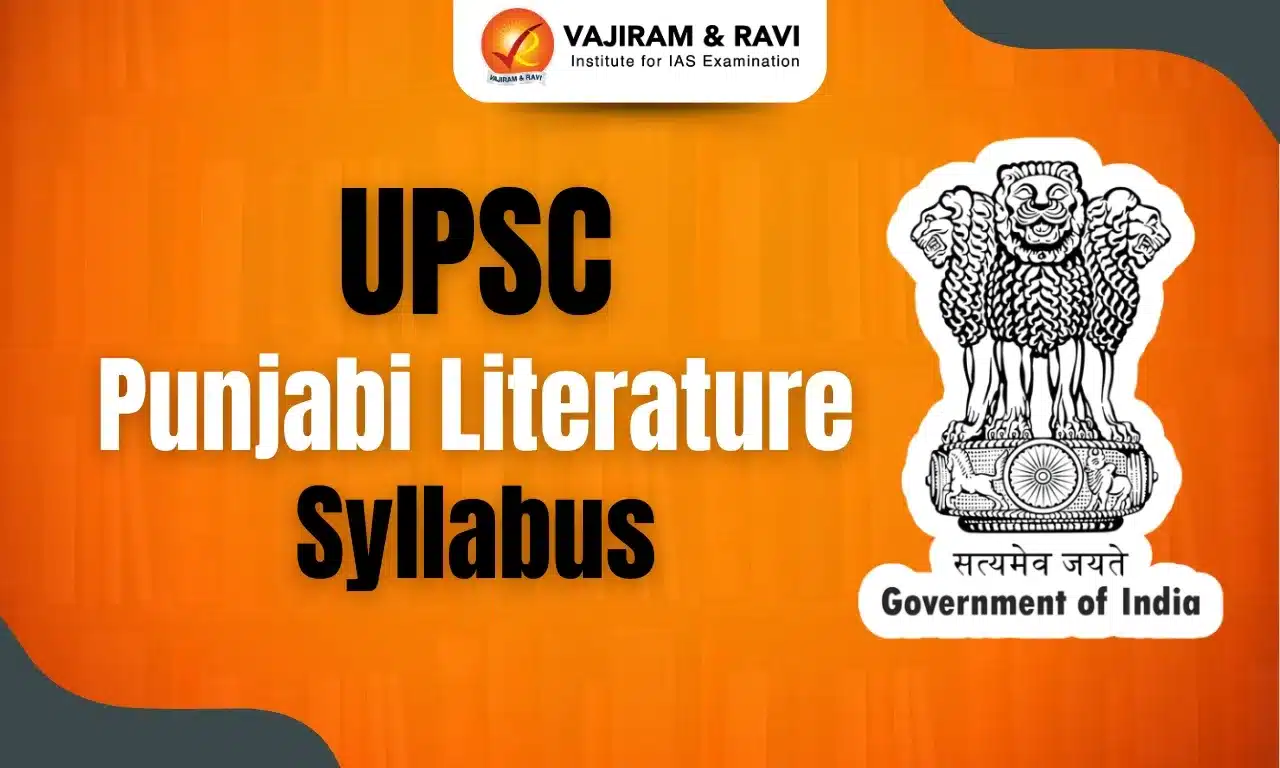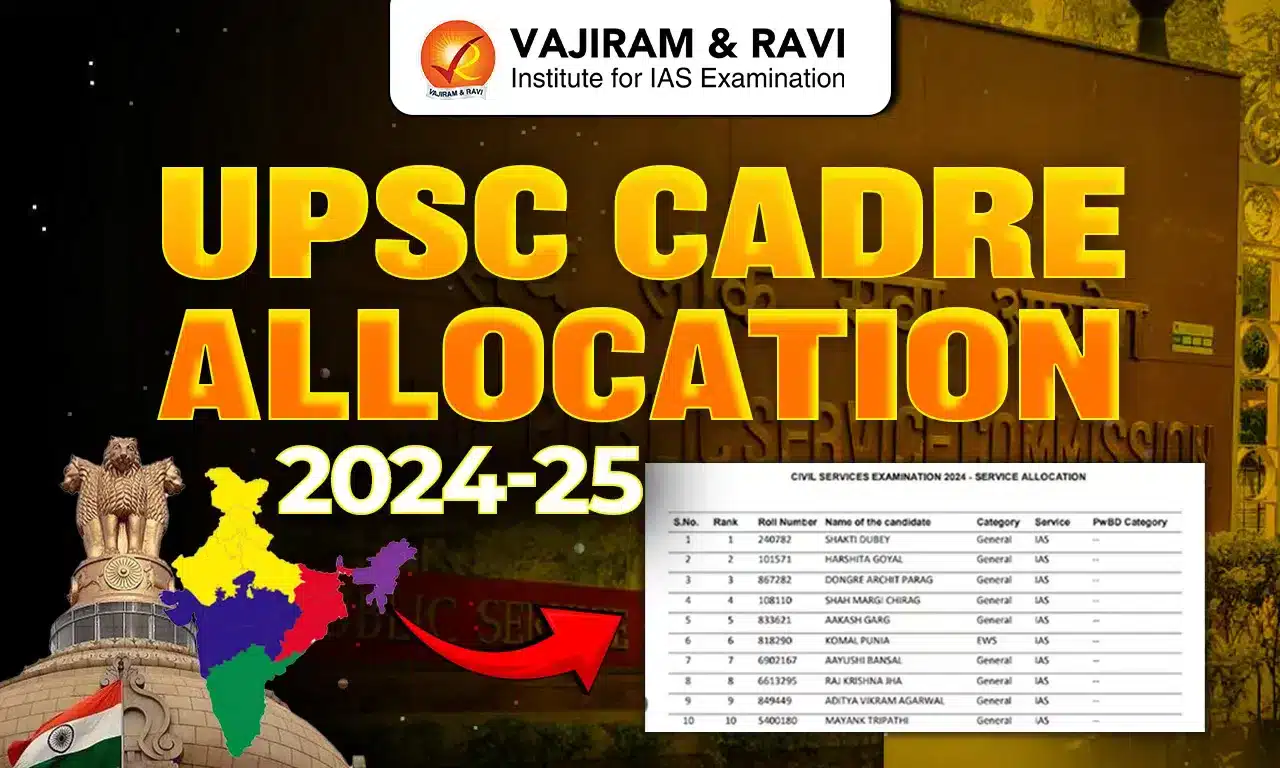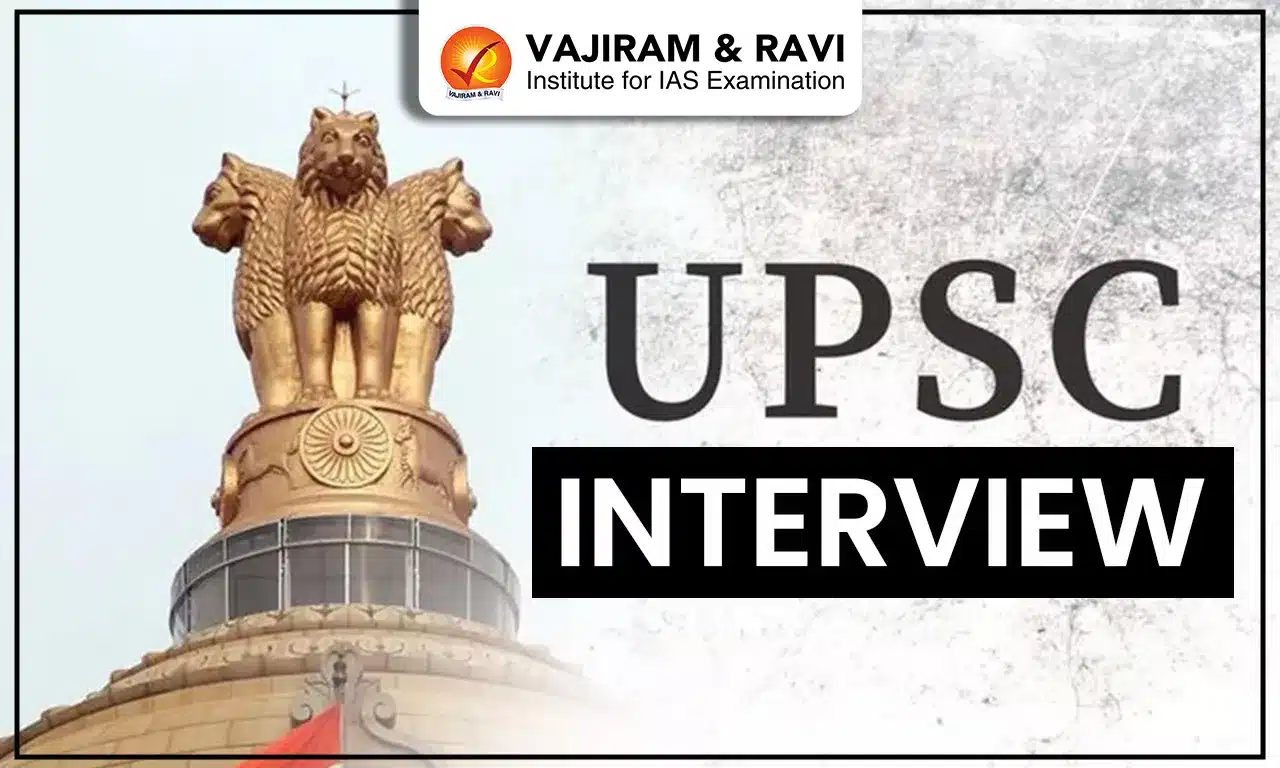UPSC Punjabi Literature Syllabus 2026: UPSC Punjabi Literature Optional Syllabus evaluates the knowledge of Punjabi language and its heritage. The syllabus can be divided into two papers, Paper 1 and Paper 2 both carrying 250 marks each, making it 500 marks in total. While paper 1 covers the historical evolution of Punjabi language, Paper 2 covers modern Punjabi literature and its literary criticism. In this article, we are going to cover the UPSC Punjabi Literature Optional Syllabus for both Paper 1 and Paper 2.
UPSC Punjabi Literature Syllabus 2026
UPSC Punjabi Literature Optional covers the complete Punjabi Literature, covering its historical background from classical to modern literary developments. The works of various important authors including prose, poetry and drama. The curriculum helps develop a thematic diversity, stylistic nuances and cultural significance of Punjabi Literature. The Punjabi Literature Syllabus motivates students to engage critically with interpretive texts within the historical and cultural contexts.
|
Overview of UPSC Punjabi Optional Syllabus |
||
|
Mains Papers |
Subject |
Marks |
|
Paper VI |
Punjabi Literature Optional Paper 1 |
250 |
|
Paper VII |
Punjabi Literature Optional Paper 2 |
250 |
|
TOTAL |
500 |
|
|
Time Duration |
3 hours |
|
UPSC Punjabi Literature Syllabus for Optional Paper 1
UPSC Punjabi Literature Syllabus for Optional Paper 1 covers history and classical roots of Punjabi literature of Punjabi Literature. The paper covers a foundational understanding of phonetics, morphology, syntax and vocabulary of Punjabi language. The syllabus includes traditional folk literature, including folk tales, ballads and myths.
The paper offers an in-depth study of ancient and medieval Punjabi literature, highlighting the contributions of eminent literary figures such as Guru Nanak, Waris Shah, Shah Hussain, and Bulleh Shah. Their thematic preoccupations and literary styles are critically examined.
|
Punjabi Literature Syllabus for UPSC |
|
|
Section |
Topics of Punjabi UPSC Syllabus |
|
Section-A |
Origin of Punjabi Language: different stages of development and recent development in Punjabi Language; characteristics of Punjabi phonology and the study of its tones; classification of vowels and consonants. Punjabi morphology: the number-gender system (animate and inanimate), prefixes, affixes and different categories of Post positions; Punjabi word formation; Tatsam. Tad Bhav. forms; Sentence structure, the notion of subject and object in Punjabi; Noun and verb phrases. Language and dialect: the notions of dialect and idiolect; major dialects of Punjabi: Pothohari, Majhi, Doabi, Malwai, Paudhi; the validity of speech variation on the basis of social stratification, the distinctive features of various dialects with special reference to tones Language and script; origin and development of Gurumukhi; Suitability of Gurumukhi for Punjabi. Classical background: Nath Jogi Sahit. Medieval Literature: Gurmat, Suti, Kissa and Var: janamsakhis. |
|
Section-B |
Modern trends: Mystic, romantic, progressive and neomystic (Vir Singh, Puran Singh, Mohan Singh, Amrita Pritam, Bawa Balwant, Pritam Singh Safeer, J. S. Neki). Experimentalist (Jasbir Singh Ahluwalia, Ravinder Ravi, Ajaib Kamal). Aesthetes (Harbhajan Singh, Tara Singh). Neo-progressive (Pash, Jagtar, Patar). Folk Literature: Folk songs, Folk tales, Riddles, Proverbs. Epic (Vir Singh, Avtar Singh Azad, Mohan Singh). Lyric (Gurus, Sufis and Modern Lyricists-Mohan Singh, Amrita Pritam, Shiv Kumar, Harbhajan Singh). Drama: (I.C. Nanda, Harcharan Singh, Balwant Gargi, S.S. Sekhon, Charan Das Sidhu). Novel (Vir Singh, Nanak Singh, Jaswant Singh Kanwal, K.S. Duggal, Sukhbir, Gurdial Singh, Dalip Kaur Tiwana, Swaran Chandan). Short Story (Sujan Singh, K. S. Virk, Prem Parkash, Waryam Sandhu). Socio-cultural: Sanskrit, Persian and Western. Literary influences; Essay ( Puran Singh, Teja Singh, Gurbaksh Singh). Literary Criticism (S.S. Sekhon, Attar Singh, Kishan Singh, Harbhajan Singh, Najam Hussain Sayyad). |
Punjabi Literature UPSC Syllabus for Optional Paper 2
UPSC Punjabi Literature syllabus for Paper 2 emphasizes modern literary works and literary criticism. It offers a comprehensive analysis of contemporary Punjabi poetry, prose, and drama within the context of socio-political changes and cultural movements.
The syllabus encourages thematic and stylistic evaluation of notable modern writers such as Shiv Kumar Batalvi and Amrita Pritam, examining their contributions to Punjabi poetry. The prose section includes short stories and novels, focusing on narrative techniques and evolving themes.
Contributions of significant Punjabi dramatists are also studied, with attention to the growth of Punjabi theatre. Additionally, this paper introduces candidates to critical theories, encompassing both Indian and Western perspectives, fostering analytical engagement with literary texts. The syllabus aims to cultivate a refined understanding of modern literary trends in Punjabi literature.
|
Punjabi Language UPSC Optional Syllabus for Paper 2 |
|
|
Section |
Topics of Punjabi UPSC Syllabus |
|
Section-A (Classical Literature) |
Sheikh Farid – The complete Bani as included in the Adi Granth. Guru Nanak – Japu Ji, Baramah, Asa di Var. Bulleh Shah – Kafian. Waris Shah – Heer. |
|
Section-B (Modern Literature) |
Shah Mohammad – Jangnama (Jang Singhante Firangian), Dhani Ram Chatrik (Poet) – Chandan Vari, Sufi Khana, Nawan Jahan. Nanak Singh (Novelist) – Chitta Lahu, Pavittar Papi, Ek Mian Do Talwaran. Gurbaksh Singh (Essayist) – Zindagi-di-Ras, Nawan Shivala, Merian Abhul Yadaan. Balraj Sahni (Travelogue)- Mera Roosi Safarnama, Mera Pakistani Safarnama. Balwant Gargi (Dramatist) – Loha Kutt, Dhuni-di-Agg, Sultan Razia. Sant Singh Sekhon (Critic) – Sahityarth, Parsidh Punjabi Kavi, Punjabi Kav Shiromani. |
Punjabi Literature Optional Books for UPSC Mains 2026
The UPSC Punjabi Literature Optional Books for UPSC Mains can help students prepare the UPSC Punjabi Literature. The important book list includes:
- A History of Punjabi Literature by Dr. Surjit Hans
- Panjabi Kavita by Mohan Singh
- Punjabi Literary Tradition, compiled by Sant Singh Sekhon.
- Guru Granth Sahib: An Analytical Study by S.S. Kohli
- Heer Waris Shah by Bhai Jodh Singh
- Anthologies and critical essays by scholars like Harbhajan Singh offer valuable insights into contemporary poetry and prose.
Last updated on December, 2025
→ Check out the latest UPSC Syllabus 2026 here.
→ Join Vajiram & Ravi’s Interview Guidance Programme for expert help to crack your final UPSC stage.
→ UPSC Mains Result 2025 is now out.
→ UPSC Notification 2026 is scheduled to be released on January 14, 2026.
→ UPSC Calendar 2026 is released on 15th May, 2025.
→ The UPSC Vacancy 2025 were released 1129, out of which 979 were for UPSC CSE and remaining 150 are for UPSC IFoS.
→ UPSC Prelims 2026 will be conducted on 24th May, 2026 & UPSC Mains 2026 will be conducted on 21st August 2026.
→ The UPSC Selection Process is of 3 stages-Prelims, Mains and Interview.
→ UPSC Result 2024 is released with latest UPSC Marksheet 2024. Check Now!
→ UPSC Prelims Result 2025 is out now for the CSE held on 25 May 2025.
→ UPSC Toppers List 2024 is released now. Shakti Dubey is UPSC AIR 1 2024 Topper.
→ UPSC Prelims Question Paper 2025 and Unofficial Prelims Answer Key 2025 are available now.
→ UPSC Mains Question Paper 2025 is out for Essay, GS 1, 2, 3 & GS 4.
→ UPSC Mains Indian Language Question Paper 2025 is now out.
→ UPSC Mains Optional Question Paper 2025 is now out.
→ Also check Best IAS Coaching in Delhi
UPSC Punjabi Literature Syllabus 2026 FAQs
Q1. Can we do UPSC in Punjabi language?+
Q2. What is the 7/5/3 rule in UPSC?+
Q3. What is the subject of literature in UPSC?+
Q4. Can I clear UPSC in 3 attempts?+
Q5. What is a 250-word answer in UPSC?+

















